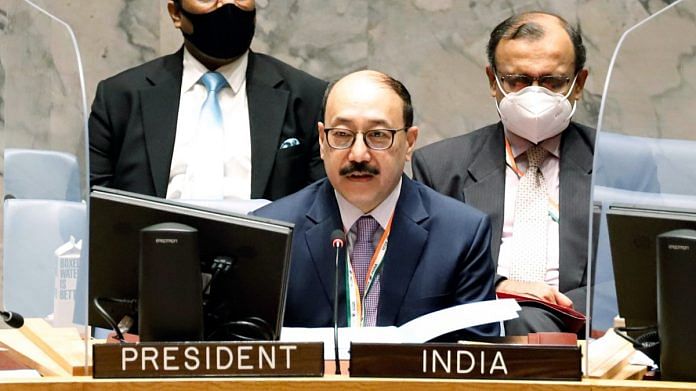
Thank you dear subscribers, we are overwhelmed with your response.
Your Turn is a unique section from ThePrint featuring points of view from its subscribers. If you are a subscriber, have a point of view, please send it to us. If not, do subscribe here: https://theprint.in/
India has said that it is committed to No First Use (NFU) of nuclear weapons under its nuclear doctrine. MEA’s Foreign Secretary (FS) Harsh V. Shringla on September 27, 2021 said that India will push for nuclear disarmament. But looking at the international security environment is there any possibility for such disarmament?
NFU has been the Government of India (GOI) position for India’s Nuclear Doctrine consistently since the GOI released the Nuclear Doctrine among the public on January 4, 2003. The statement by FS clearly means that the GOI has weighed all its options carefully and then reiterated its commitment to NFU. This is because of full faith in credible minimum deterrence (CMD) along with an assured, secure second strike capability. It is good that it has been reiterated at the UN. The fact remains that the nuclear environment and the security environment worldwide has changed quite dramatically and is becoming worse.
In the nuclear age the only stability which can come will come from a defensive posture. Anything which is aggressive it leads to counter action that results in an arms race. So this aggressive path has never led to stability. The strategic stability between US and USSR was only retained when it was confirmed that nuclear missile fired would become the cause for mutual assured destruction. India took note of it and correctly adopted NFU. This is why India’s NFU is a harbinger of strategic stability. India would like to carry forward and ensure that more countries around the world adopt NFU.
The two adversaries of India, which is China and Pakistan, they have put in the past, present a lot of pressure on the global nuclear arms control architecture. While India is a responsible stakeholder in the global nuclear architecture, that always represents its case with a modicum of sobriety, modicum that propels stability in South Asia. This is not what China and Pakistan have followed. So the challenges are huge for how to convince other stakeholders that this is the paradigm that should continue.
At one point in time there was a situation where Pakistan was the only problem, which is its support to terrorism under nuclear umbrella but now China too due to its belligerence and expansionism. For example the war like situation created by China since early 2020 on the Line of Actual Control. China is rapidly modernizing and ramping up its nuclear base. And China is not part of the trilateral arms control initiative (along with USA and Russia), nor would it prefer to. So the picture is clear, China looking to America and trying to ramp up its modernization process. At the same time India more focused on China with its nuclear weapons after the Doklam Standoff. So India should make an effort to revamp the global nuclear arms control mechanism.
This is because the mechanism is breaking down. India has abiding faith in universal comprehensive non discriminatory verifiable disarmament. This dialogue should resume. And India by its stature, impeccable non-proliferation record, faith in nuclear disarmament should continue to press for the discourse on a nuclear weapon convention in terms of global NFU. Equally important is for India to keep working on its successive nuclear powered ballistic missile submarines (SSBN) which would give CMD with respect to China. Currently it is a work in progress, the more credible, the more seriously the global powers America, Russia and China take India’s nuclear disarmament initiative.
India means genuine peace which is proved by the fact that among all the nuclear weapon states, only India has stated in its nuclear doctrine the pursuit of verifiable, non discriminatory nuclear disarmament. Though India has declared itself a nuclear weapon state in May 1998, India believes for global peace and stability it is a must that these weapons of mass destruction are eliminated worldwide. We all must recall the 1978 special session of United Nations General Assembly for disarmament. In this landmark session there was consensus for moving towards elimination of nuclear weapons and for prevention of nuclear war.
The important thing before the global multilateral system is that those who feel that they can manage the nuclear age they are coming to the conclusion of it being impossible. Because the arms control structure which they tried to create has floundered now. Both USA and Russia are walking back from it. The only thing remaining is the New START treaty, that was recently extended by five years between the US and Russia. A step by step, time bound, verifiable framework is needed for peace by eliminating all nuclear weapons worldwide through multilateral negotiations. All this is doable but multiple considerations of political nature inside/outside USA, China and Russia, have eventually made it impossible to achieve anything. So India cannot succeed without them!
Also read: SubscriberWrites: ‘Democracy 2.0’ — A new definition of democracy is needed in changing times
These pieces are being published as they have been received – they have not been edited/fact-checked by ThePrint.

COMMENTS